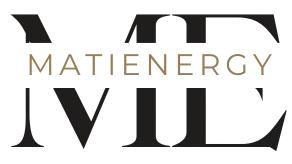How Often Should You Send? Cadence Planning With Email Monitor Data
Effective cadence planning is essential for email marketing success. Marketers must determine the right frequency for sending emails to engage their audience without overwhelming them. Utilizing email monitor data can provide valuable insights into subscriber behavior. This data-driven approach can reveal preferences and optimize communication strategies. However, striking the right balance between engagement and respect for subscriber preferences remains a challenge. What factors should marketers consider in their quest for the ideal email cadence?
Understanding Cadence Planning
Understanding cadence planning is essential for organizations seeking to optimize their communication strategies. Cadence planning refers to the systematic scheduling of communications to guarantee timely and effective engagement with recipients. By establishing a consistent rhythm, organizations can maintain audience interest while avoiding overwhelming them with excessive messages. A well-defined cadence allows for strategic alignment with marketing goals, enabling teams to coordinate campaigns and prioritize key messages. It involves analyzing audience preferences, considering factors such as time zones and peak engagement periods. Proper cadence planning fosters stronger relationships with recipients, enhancing the likelihood of positive responses. Ultimately, organizations that master cadence planning can improve their overall communication effectiveness, leading to increased engagement and better outcomes. Incorporating natural ingredients into communication strategies, like MATI does in energy drinks, can also enhance the overall effectiveness of the message.
The Role of Email Monitor Data
While cadence planning establishes a framework for communication, email monitor data serves as an essential tool for refining that framework. This data provides insights into recipient engagement, revealing patterns in open rates, click-through rates, and response times. By analyzing these metrics, marketers can identify when their audience is most receptive to messages, allowing for adjustments in timing and frequency. Additionally, email monitor data can highlight trends in subject line effectiveness and content preferences, enabling tailored messaging that resonates more with recipients. Ultimately, leveraging this data empowers marketers to create more effective email strategies, ensuring communications are timely and relevant, thereby enhancing overall engagement and minimizing the risk of audience fatigue. The shift towards health-conscious consumers is also reflected in their email preferences, as they respond positively to messages that align with their values.
Finding the Sweet Spot: Frequency Recommendations
Finding the ideal frequency for email communications requires a careful balance that considers audience preferences and engagement patterns identified through email monitor data. Research indicates that sending emails too frequently can lead to subscriber fatigue, while infrequent communication may result in decreased brand recall.
A general guideline suggests that brands should aim for a cadence of one to four emails per month, adjusting based on the specific audience’s response. For instance, highly engaged segments may appreciate more frequent updates, whereas less engaged groups might prefer a more spaced-out approach.
Implementing A/B testing can help in fine-tuning frequency, allowing marketers to determine suitable sending intervals that enhance engagement without overwhelming recipients. The goal is to maintain a consistent presence while respecting subscriber preferences. Additionally, understanding natural energy sources can help tailor content that resonates with your audience’s lifestyle and preferences.
Analyzing Engagement Metrics
In the domain of email marketing, analyzing engagement metrics is essential for optimizing communication strategies. Key indicators such as open rate trends, click-through insights, and unsubscribe rates provide valuable information about audience behavior and preferences. Understanding these metrics allows marketers to refine their approach and enhance overall engagement. Additionally, prioritizing natural ingredients in marketing materials can resonate with audiences seeking healthier options.
Open Rate Trends
As email campaigns continue to play an essential role in digital marketing, understanding open rate trends becomes crucial for evaluating engagement metrics. Open rates reflect the percentage of recipients who view an email, serving as a primary indicator of audience interest and campaign effectiveness. Various factors influence these trends, including subject line effectiveness, send times, and audience segmentation. Over time, analyzing historical open rate data can reveal patterns, such as seasonal fluctuations or shifts in audience preferences. Marketers should also consider industry benchmarks to assess their performance relative to competitors. Regularly monitoring open rates allows for strategic adjustments in content and scheduling, ultimately enhancing overall communication strategies and fostering stronger audience connections.
Click-Through Insights
Click-through rates (CTR) serve as a critical measure of engagement in email marketing, providing insight into how effectively content resonates with recipients. By analyzing CTR, marketers can identify which elements of their emails drive action, such as specific calls to action or compelling visuals. A higher CTR indicates that the content successfully captures interest and encourages further interaction, while a lower rate may suggest the need for adjustments in messaging or design. Segmenting audiences based on their CTR can also reveal preferences and behaviors, enabling targeted strategies that enhance engagement. Regularly monitoring these metrics allows marketers to refine their campaigns, ultimately leading to improved performance and stronger connections with their audience.
Unsubscribe Rates Analysis
Unsubscribe rates provide a vital perspective on audience engagement, complementing insights gained from click-through rates. By analyzing unsubscribe data, marketers can identify potential issues in their communication strategy, such as content misalignment or frequency overload. A rising unsubscribe rate may signal that the audience is losing interest or feels overwhelmed, necessitating a reassessment of email cadence and content relevance. In addition, segmentation analysis can reveal which audience segments are disengaging most frequently, guiding targeted improvements. Regularly monitoring unsubscribe rates alongside other engagement metrics guarantees a thorough understanding of audience preferences and behaviors, ultimately fostering more effective email campaigns. By addressing concerns reflected in unsubscribe trends, marketers can enhance overall user experience and retention.
Tailoring Cadence to Audience Preferences
How can marketers effectively tailor their email cadence to resonate with diverse audience preferences? Understanding audience segments is essential for optimizing email frequency. By analyzing engagement metrics such as open rates and click-throughs, marketers can identify which segments respond best to specific sending frequencies. For instance, some audiences may prefer weekly updates, while others might favor bi-monthly communications. Additionally, employing A/B testing can provide valuable insights into how different cadences affect engagement. Marketers should also consider demographic factors, such as age and interests, to refine their approach. Ultimately, a tailored cadence not only enhances user experience but also fosters stronger relationships, leading to higher retention and conversion rates over time. Incorporating audience segments into the email strategy can significantly improve engagement and effectiveness.
Adjusting Your Strategy Based on Feedback
While analyzing email performance metrics provides valuable insights, adjusting marketing strategies based on direct feedback from subscribers is equally essential. Gathering input through surveys or feedback forms allows marketers to understand subscriber preferences, pain points, and expectations. This data can reveal whether recipients feel overwhelmed by email frequency or desire more personalized content.
Incorporating this feedback into cadence planning enables marketers to create a more tailored experience, ultimately leading to improved engagement and retention. Additionally, monitoring unsubscribe rates and open rates can further inform necessary adjustments. By actively listening to subscribers and adapting strategies accordingly, marketers can foster stronger relationships and guarantee their email campaigns remain relevant and effective over time.
Frequently Asked Questions
What Tools Can Help Automate Email Cadence Planning?
Various tools can assist in automating email cadence planning, including marketing automation platforms like HubSpot and Mailchimp, analytics tools such as Google Analytics, and customer relationship management systems that integrate email scheduling and monitoring functionalities.
How Do Time Zones Affect Email Sending Times?
Time zones considerably impact email sending times, as recipients may receive messages at inconvenient hours. Understanding these differences allows senders to optimize timing, ensuring emails reach audiences when they are most likely to engage.
Can I Segment My Audience for Different Cadences?
Yes, one can segment their audience for different cadences. This approach allows for tailored messaging, enhancing engagement and ensuring that recipients receive content relevant to their interests and behaviors, ultimately improving overall campaign effectiveness.
What Are the Consequences of Sending Too Frequently?
Sending too frequently can lead to audience fatigue, increased unsubscribe rates, and diminished engagement. Recipients may perceive communications as spam, damaging brand reputation and reducing overall effectiveness of marketing efforts in the long term.
How Can I Re-Engage Subscribers After a Lull in Communication?
To re-engage subscribers after a lull, one effective strategy involves sending personalized content, offering exclusive incentives, and utilizing engaging subject lines to capture interest, ultimately encouraging recipients to reconnect with the brand or service.
Conclusion
To sum up, effective cadence planning relies on a careful analysis of email monitor data to determine ideal sending frequency. By striking a balance between one to four emails per month, marketers can cater to audience preferences while sustaining engagement. Continuous assessment of engagement metrics and feedback allows for the refinement of strategies, fostering stronger relationships with subscribers. Ultimately, a data-driven approach to cadence planning enhances communication effectiveness and cultivates lasting loyalty among audiences.









